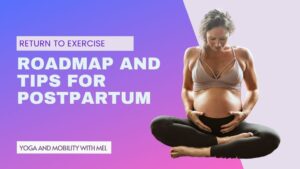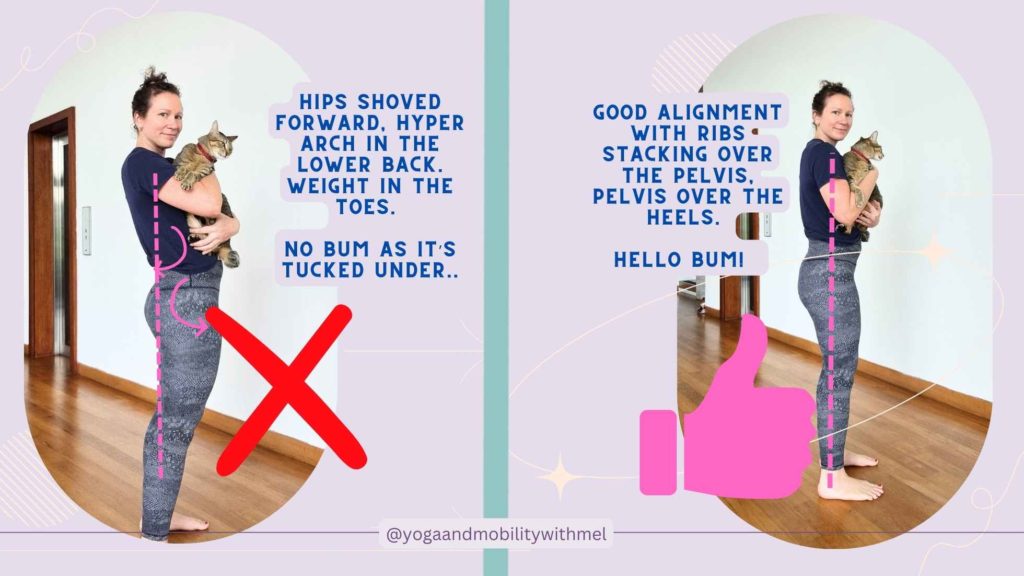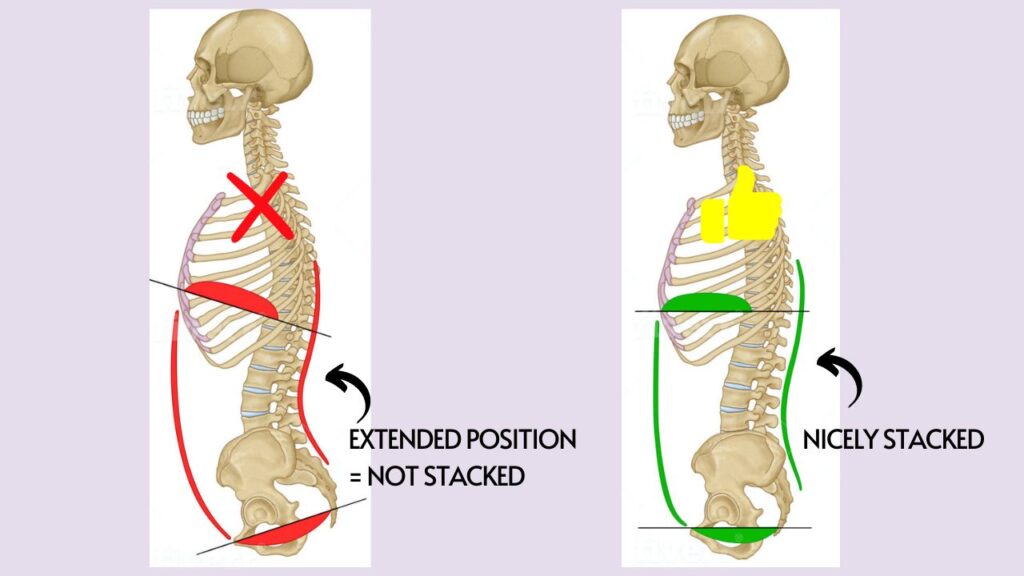Your Roadmap and Best Tips for Postpartum Recovery to Return to Exercise

Hey mama, give your body a standing ovation for the miraculous journey of pregnancy and childbirth! It’s like a 9-month masterpiece creation followed by a grace period of recovery lasting anywhere from 9 months to 2 years++. Remember, postpartum is forever. Each person will heal at a different pace. Forget rushing to reclaim your pre-baby bod. Instead, embrace and celebrate your transformed, crazy powerful (for what you just went through!), and even mightier body!
Just to give you some insight on the many changes in your body that happened:
- your organs were squished and moved around,
- your diaphragm, aka breathing muscle, was pushed up and had a harder time working,
- your ribs spread,
- your pelvic floor had to handle A LOT of pressure,
- your abdominal muscles stretched out,
- your back became over-tight and overworked,
- and hormones caused ligament laxity
Add a baby and sleep deprivation to the mix, and you have a whole train wreck to recover from.
During pregnancy, it’s common to experience changes in your core that persist postpartum. From a weaker core and lack of stability, to hips that may shift forward in space, creating what some call a “mum butt” or pancake bum. This can also make for locked out knees pushing you more forward and increasing pressure on your belly. Additionally, you might notice that your bra no longer fits as it used to. Maybe you’ve created a slouched position from breastfeeding or just carrying and looking at your beautiful baby all day!
One of the best things you can do for your postpartum recovery is to remember to take care of yourself, also. Give yourself plenty of grace! For your body, this means regain really good 360-degree breathing, learn to manage pressure, and find a good stacked position. Let’s dive into what that means and how it can be a game-changer for you.
Your Roadmap to Postpartum Recovery
1. Start with Breathing: Restore 360-degree breathing. Get your diaphragm working correctly to move organs back in place. We want to get those ribs and diaphragm moving again! Work on getting a good exhale to connect to your core. Breathing is the first starting point and can begin immediately after birth.
2. Core Connection (or reconnection): Remember, your core will be weak to begin with—it will not bounce back in a snap. It took nine months of change, so it requires patience. C-section considerations also matter; recovery timelines differ between planned and emergency cesarean sections. Start scar tissues massage as soon as you’re cleared by your doctor.
Work to connect your abs with the breath and pelvic floor to improve overall function and manage pressure well. Check and monitor for any abdominal separation, rib flares and compensations.
3. Work on Posture and Achieving a Good Stack: This helps bring everything together and load it more efficiently. In the rebuilding phase, workouts might be more mental than physical. Start from the foundations again. Learning anew can sometimes be a blessing in disguise, helping you reconnect with your body. Read on below for the how to!
4. Assess for Any Other Imbalances: Make sure you are feeling the exercises in the right places. Don’t just throw yourself around in space. Make movements meaningful and aware to work smarter, not harder. The first three to four months matter for rebuilding a solid base. Establish a great base of strength, get the pelvic floor and core working, then progress smartly.
One of the best things you can do for your postpartum recovery is to regain optimal breathing to manage pressure and find a good stacked position. Let’s dive into what that means and how it can be a game-changer for you.

What is the 'Stack'?
In technical terms, the “stack” is aligning your thoracic (ribcage) and pelvic diaphragm nicely atop one another to allow for optimal breathing. As many of you know, I’m a huge advocate for better breathing—it’s the foundation of everything I teach. But let’s make this concept more exciting and accessible.
The stack is all about getting your body aligned so you can breathe better and move better. It’s a total game-changer. Many people skip over this because it’s not exactly the flashiest part of an exercise routine, but it’s absolutely crucial for getting the most out of your workouts and helping to be pain-free. It can alleviate various symptoms you might be experiencing.
When you nail your stacking, you’re optimizing your breathing and getting the most bang for your buck in terms of movement and muscle recruitment. It helps your body work smarter, not harder.
Why the Stack Matters
A stacked body position is key to healing your core and pelvic floor. Your core system is a pressure system, much like a canister with a top (diaphragm), bottom (pelvic floor), front (deep abdominals), and back (back muscles/multifidus). The goal of a “stack” is to allow the diaphragm and pelvic floor to sit in an optimal position so that your pelvic floor can move in sync with your breath.
That’s a little bit boring and maybe TMI (too much information), so when you have a solid stack, you’re setting yourself up for success in everything from daily activities to intense workouts. Think of all the times lifting your kiddo up and down off the floor or bed! Proper alignment can reduce the risk of injury, improve your movement efficiency, and help you feel stronger and more capable.
Overall, by focusing on stacking, you can help manage pressure within the abdomen and pelvis, supporting better recovery and overall function.
Breathing and the Stack
Proper breathing is integral to maintaining a good stack and ESSENTIAL for recovery. We’re aiming for front-to-back and side-to-side expansion and building a more 360-degree breathing pattern. It’s important to understand the difference between belly breathing and diaphragmatic breathing. Belly breathing often involves pushing the belly out, which can increase pressure in the abdomen (stressing already stretched out tissue postpartum). Diaphragmatic breathing, on the other hand, engages the diaphragm and allows for full, deep breaths that expand the ribcage and engage the pelvic floor.
Frequently, when practicing belly breathing, the breath can become shallow and involve squeezing the ribcage rather than expanding it. This improper technique may lead to a ‘muffin top’ appearance in the lower belly due to poor pressure management and coordination. Check out examples of poor breathing strategies for more.
When you inhale, can you feel the breath traveling all the way down, allowing your pelvic floor to relax and expand? Can you feel the expansion of your ribcage? And when you exhale, can you feel the breath moving from the bottom up? Gently engaging your pelvic floor and deep core muscles with the ribcage pulling in and together (without squeezing or crunching)?
For many moms who are often in an extended posture, we can work on gently exhaling the lower ribs down and back in space, without letting the chest collapse forward or clenching the glutes. This adjustment helps to align the ribcage over the pelvis, creating a more efficient stack.
Connecting to the Core
Breathing correctly helps you connect to your core, creating a strong foundation for movement. By focusing on diaphragmatic breathing, you engage your deep core muscles, including the pelvic floor. This connection is essential for maintaining stability and control as you move. When you exhale fully, you engage your abs, pulling your ribs in and creating a stable core. Correct engagement allows you to progressively load your core, building strength and resilience over time.
We want to get a really good exhale, while maintaining length – to help us find this deep connection to your core muscles. Instead of using your spine or crunching or squeezing all the time to find a sense of stability. This can take time to progress, so starting with the breath and slow mindful movements. Check for abdominal separation, or diastisis recti, and make sure you can manage the extra pressure.
For example, can you keep your pelvis still as your move your leg away from your body in supine? Alongside this, can you lift your leg off the floor without creating a poof out of your lower belly? At the same time, can you move your limbs away from your center without excessively arching in your back? If not, return to the breath to help create that good inner core ‘corset’ and manage pressure well. Here’s a more deep dive on your core four to check out.

How to Build the Perfect Stack
1. Start with the Pelvis: Think of your pelvis as the foundation. Get a slight posterior tuck (think Michael Jackson, not a J Lo..). This position helps align your lower back and hips correctly for most.
2. Exhale Fully: As you exhale, feel your abs engage, your ribs pull in, and a nice bit of tension in your core. This engagement sets the stage for a stable stack. Don’t oversqueeze the ribs and create a muffin top in the lower belly! Exhale from the bottom up.
3. Control the Pause: Hold that tension for a moment. This pause helps solidify the engagement and alignment you’ve just created. Bonus, this helps to increase tolerance of carbon dioxide for better relaxation.
4. Inhale with Tension: Keep a bit of that abdominal tension as you breathe in. This ensures that your stack remains stable even as you breathe, promoting better breathing mechanics and core stability.
This might sound easy enought, but there are a lot of little cheats and nuances. Our bodies are incredibly adept at making movement happen, often in ways that might not be super helpful, especially if we’re experiencing pain, symptoms, or impaired movement or recovering from birth!
Example Postpartum Recovery Timeline
Week 1: Short walks, rest, and recovery. The pelvic floor and core are very vulnerable during this time.
Week 2-8: Start with gentle movement (even if just from your bed!), build posture awareness, practice deep breathing exercises, work on mobility, and pay attention to any areas that might need extra focus. Build a solid foundation!
Week 6 to 4 months: Keep intensity at 25-50%, shorter sessions, focus on breathing and staying tall. Avoid clenching or sucking in strategies, but don’t let it all hang out either. Also, a reminder, just because you can do something doesn’t mean you should!
Get cleared by your doctor to return to some movements—typically 2-4 weeks for a vaginal delivery, 2-6 weeks for a c-section.
Postpartum can be a vulnerable space both physically and emotionally. Postpartum depression affects many women and wildly fluctuating hormones make navigating this challenging. Take this test to find out more and don’t be afraid to ask for help. As the saying goes, it takes a village!
Let's Get Breathing and Stacking!
The stack is foundational for improving movement options. When you have a solid stack, you’re setting yourself up for success in everything from daily activities to intense workouts. Proper alignment can reduce the risk of injury, improve your movement efficiency, and help you feel stronger and more capable.
There is so much we can do to build awareness around a stacked body position. Ultimately, our goal is to breathe better, move with ease, and minimize pressure leaks in the system, which can lead to issues like leaking, pelvic organ prolapse, and diastasis.
I talk about breathing a lot because it is SO important. Proper breathing starts with proper alignment, and that’s where the stack comes in. So, let’s get stacking and moving like a boss. Whether you’re looking to improve your workouts, reduce pain, or simply move better in your daily life, finding your stack can make a world of difference.
Does this sound like something you need more of in your life? I’m here to help! Feel free to email me, or contact me and let’s get you on the path to better alignment and movement.
Tags
